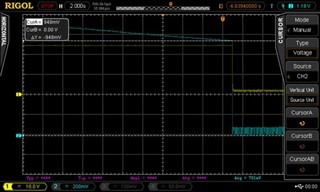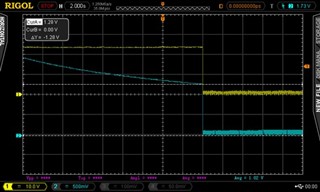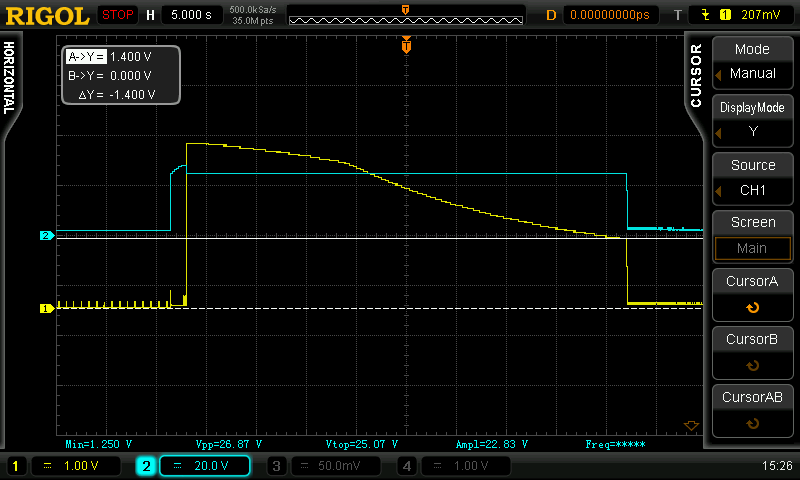Hi,
we're haveing some troubles related to pin NTC of the device (pin n°1).
Connected to this pin there are a 4K7 fixed resistor in series with a 100K NTC (pn: ERT-J1VV104H) down to GND.
When the ambient temperature detected by NTC rises, the impedance of NTC lowers, so the voltage goes down to approximately 0.95V and the controller stops switching.
This is what really happens in the application, but we're haveing about 10% of the electronic cards that stop switching when the voltage on NTC pins goes down to 1.28V, with a too early thermal protection of the controller.
We find this abnormal behaviour in electronics cards assembled in two different plants and different batches of UCC28701 controllers, so it seems not depending on handling and assembly process of the component.
I see in the data sheet no tollerance value nor in the Voltage Threshold (Typ 0.95V) neither in the Current Sourced from pin NTC (typ 105uA). These parameters are tested in production?
Please find attached two plots where blue trace is voltage on NTC pin and the yellow trace is the output voltage of the flyback controller. Both traces are filtered in order to check the correct value of NTC voltage at stopping time.
What could be done? The impedance (4K7 + 100K) on pin NTC is correct? Or could be lower?
I'm looking forward to hearing from you soon.
BR
Ghiotto R.






